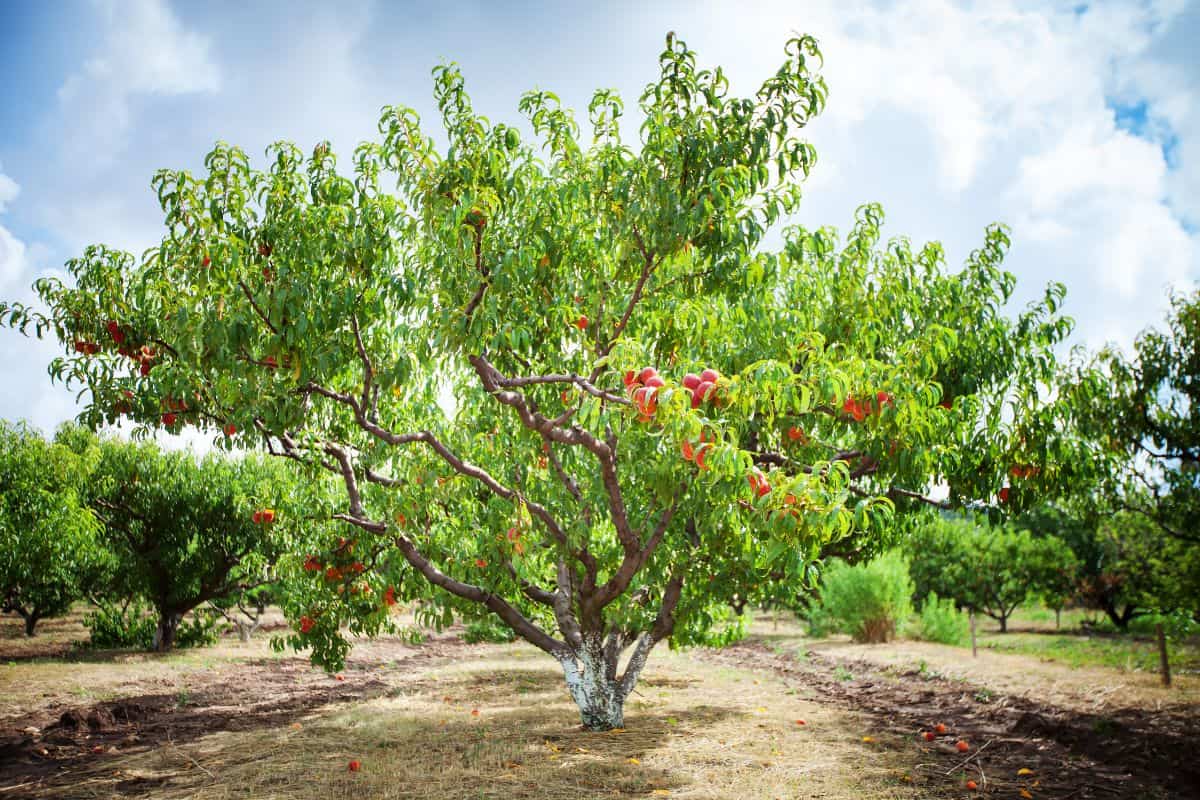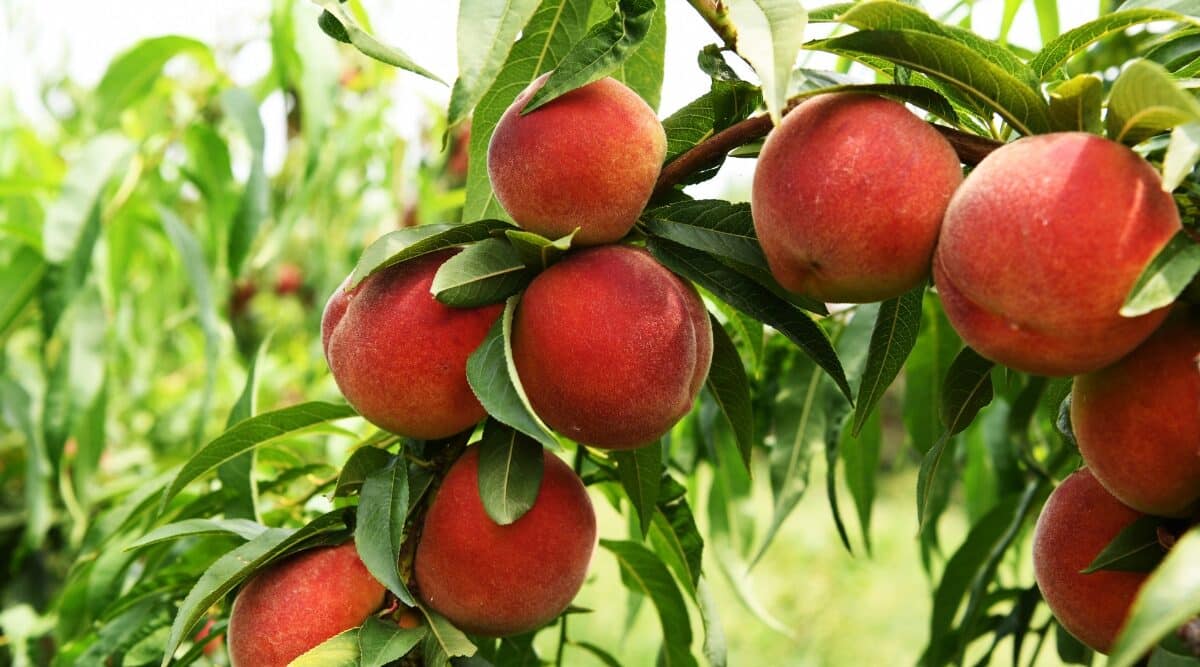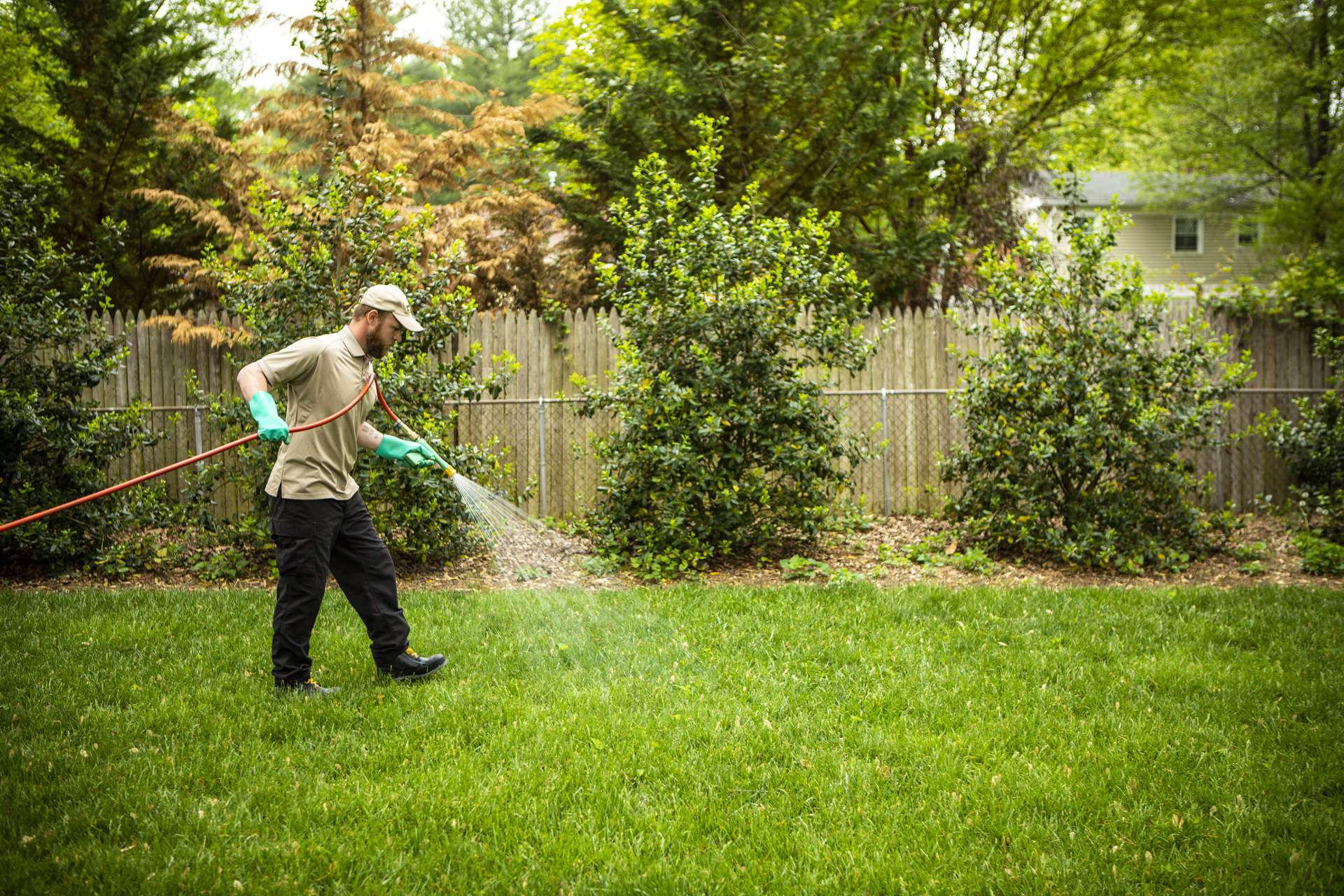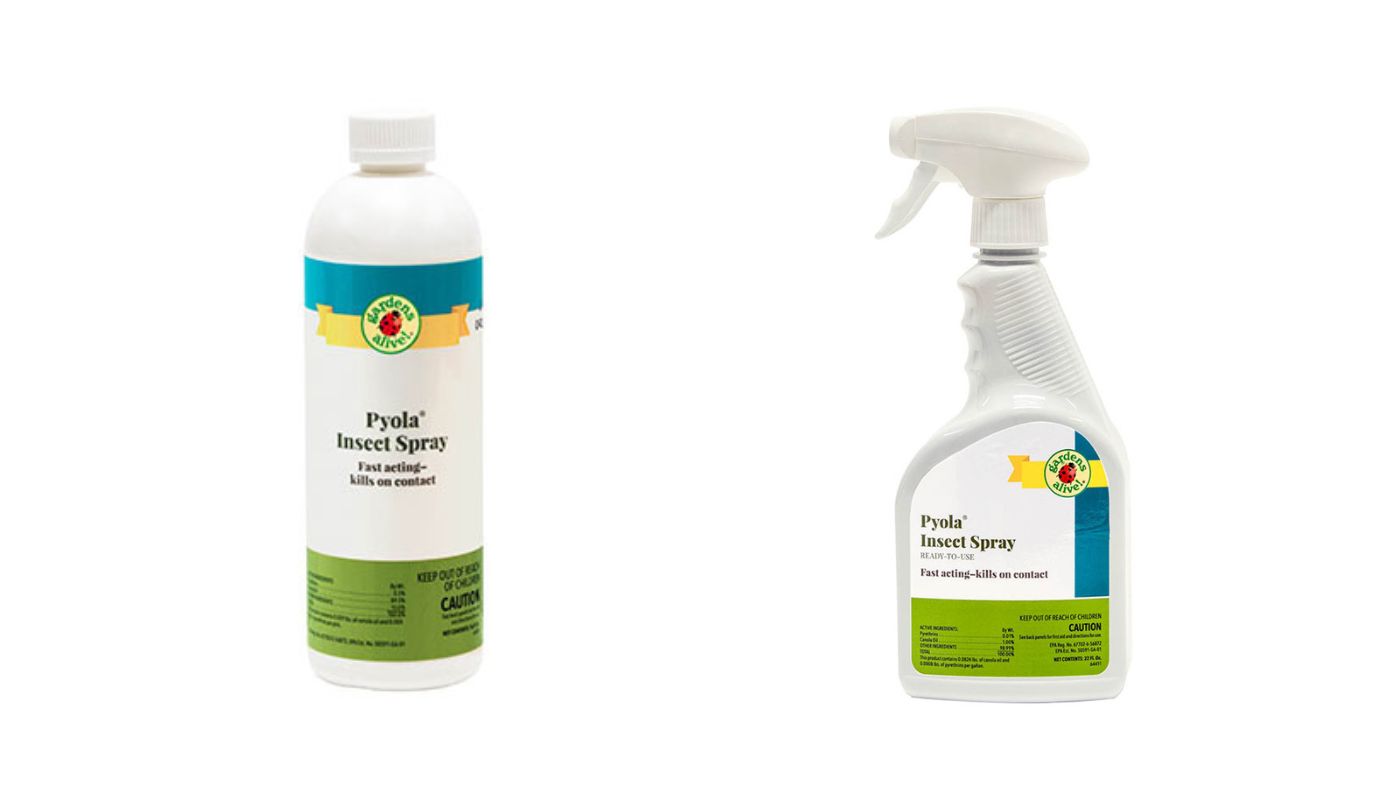Home>Gardening Tips and Tricks>Problem Solving>When To Spray Peach Trees For Insects


Problem Solving
When To Spray Peach Trees For Insects
Published: December 10, 2023
Learn the best timing to spray peach trees for insect control and effective problem solving with our comprehensive guide. Protect your trees and ensure a healthy harvest.
(Many of the links in this article redirect to a specific reviewed product. Your purchase of these products through affiliate links helps to generate commission for Chicagolandgardening.com, at no extra cost. Learn more)
Table of Contents
Introduction
Welcome to the world of peach tree cultivation! Growing your own peach trees can be a rewarding experience, providing you with juicy, fresh fruit right from your backyard. However, like any plant, peach trees are susceptible to insect infestations that can damage the health of the tree and reduce fruit yields.
Keeping your peach trees pest-free requires proactive pest management practices, such as monitoring pest populations and knowing when and how to apply insecticides. In this article, we’ll explore the key considerations for spraying insecticides on peach trees to control common pests and ensure healthy tree growth.
It’s important to note that while the use of insecticides is an effective method for managing pests, it should be done judiciously and with caution. Integrated Pest Management (IPM) practices, which combine cultural, biological, and chemical control methods, should be followed to minimize the impact on the environment and beneficial insects.
Throughout this article, we’ll discuss the different insects that commonly affect peach trees, how to monitor their populations, determining infestation thresholds, identifying the right timing for spraying, selecting the proper insecticide, and applying it to your peach trees. We’ll also provide additional tips to help you effectively manage insect pests and maintain the health of your peach trees.
By the end of this article, you’ll have a comprehensive understanding of how to protect your peach trees from insect pests and ensure bountiful harvests for years to come. So let’s dive in and explore everything you need to know about spraying peach trees for insects!
Understanding Common Insects Affecting Peach Trees
Peach trees are vulnerable to various insect pests that can cause damage to leaves, stems, and fruit. Understanding the common insects affecting peach trees is crucial in implementing effective pest control strategies. Let’s take a closer look at some of the most prevalent pests:
- Peach Aphids: These tiny, pear-shaped insects feed on the sap of peach tree leaves, causing them to curl and distort. Aphids reproduce rapidly, so early detection is essential to prevent widespread infestation.
- Peach Tree Borers: These moth larvae tunnel into the trunk and branches of peach trees, causing extensive damage. Look for sawdust-like excrement and gum oozing from entry holes as signs of infestation.
- Peach Twig Borers: Similar to peach tree borers, these pests infest the tree’s new shoots and twigs. Damaged twigs may wilt or die off, affecting the tree’s overall health.
- Oriental Fruit Moths: The larvae of these moths tunnel into peach tree shoots and fruit, leaving behind frass and causing premature fruit drop. Regular monitoring is crucial to manage this pest.
- Plum Curculios: These weevils damage peach fruits by puncturing them and laying eggs. The developing larvae feed within the fruit, causing it to become deformed and drop prematurely.
These are just a few of the many insects that can harm your peach trees. By familiarizing yourself with the appearance and behavior of these pests, you can quickly identify and treat infestations before they cause significant damage.
Remember, implementing preventive measures, such as maintaining proper tree hygiene, removing affected plant parts, and using physical barriers like sticky traps, can help reduce pest populations and minimize the need for chemical treatments. In the next section, we’ll discuss how to monitor pest populations to determine the appropriate time for spraying.
Monitoring Pest Populations
Effective pest management begins with regular monitoring of pest populations in your peach orchard. By monitoring, you can assess the severity of infestations and determine the appropriate time to take action. Here are some methods you can use to monitor pest populations:
- Visual Observation: Regularly inspect your peach trees, paying close attention to the leaves, shoots, and fruit. Look for signs of damage, such as curling leaves, wilting twigs, frass, or physical presence of pests. Use a magnifying glass if needed to identify tiny insects like aphids.
- Pheromone Traps: Deploy pheromone traps around the orchard to monitor the activity of specific pests, such as Oriental Fruit Moths or Peach Tree Borers. These traps emit chemicals that attract the male insects, allowing you to gauge their population density.
- Sticky Traps: Place sticky traps near peach trees to catch and monitor flying insects. This method can be useful for detecting pests like aphids, leafhoppers, or whiteflies.
- Beat Sheet Sampling: Lay a white cloth or tray beneath a tree branch and gently tap the branch with a stick. The dislodged insects will fall onto the cloth, allowing you to identify and count them. This method is particularly effective for monitoring pests like Plum Curculios or Japanese Beetles.
- Tree Banding: Apply a sticky substance, like Tanglefoot or transparent packing tape, around the trunk of the tree to trap crawling insects, such as Peach Tree Borers. Regularly inspect the band for captured pests.
By using a combination of these monitoring methods, you can gather valuable information about the pest populations in your orchard. Keep detailed records of your observations, noting the pest species, their population levels, and any changes over time. This data will be essential in determining the right time for spraying insecticides, which we will discuss in the next section.
Determining Infestation Thresholds
Once you have monitored the pest populations in your peach orchard, it’s important to establish infestation thresholds. Infestation thresholds are predetermined levels of pest presence at which intervention measures, such as spraying insecticides, become necessary. Determining these thresholds will help you make informed decisions and avoid unnecessary chemical treatments. Here are some factors to consider when defining infestation thresholds for your peach trees:
- Economic Damage: Assess the potential impact of pest damage on your peach tree’s yield and overall profitability. Determine the level of damage that would justify the cost of intervention. For example, if the infestation is causing a significant reduction in fruit production, it may be necessary to take action earlier.
- Tree Health: Consider the health and vigor of your peach trees. Weaker trees may be more susceptible to pest damage and might require earlier intervention. Pay attention to signs of stress, such as poor growth, leaf discoloration, or general decline.
- Pest Life Cycle: Familiarize yourself with the life cycle of the pests affecting your peach trees. Some pests, like aphids or Oriental Fruit Moths, reproduce rapidly, so infestations can quickly escalate. Others, like Peach Tree Borers, have a more extended life cycle, allowing you more time to intervene.
- Natural Predators: Consider the presence of natural predators or beneficial insects in your orchard. If beneficial insects are actively controlling pest populations, you may tolerate higher pest levels before taking action.
By understanding the economic impact, tree health, pest life cycles, and the role of natural predators, you can establish appropriate infestation thresholds for your peach trees. Regular monitoring and keeping records of pest populations will help you track and evaluate any changes, allowing you to adjust the thresholds if necessary. Once the threshold is reached, it’s time to move on to the next step: determining the right timing for spraying insecticides.
Identifying the Right Timing for Spraying
Timing is crucial when it comes to spraying insecticides on your peach trees. Applying the insecticide at the right moment ensures maximum effectiveness and minimizes the risk to beneficial insects and the environment. Here are some key considerations when identifying the right timing for spraying:
- Life Cycle of Pests: Understand the life cycle of the specific pests affecting your peach trees. Different pests have different vulnerable stages, such as egg, larva, or adult. Target these stages when applying insecticides for optimal control.
- Phenological Stages of Peach Trees: Consider the phenological stages of your peach trees, such as bud development, flower bloom, and fruit set. Certain pests, like aphids or Oriental Fruit Moths, are more active during specific phenological stages. Focus your spray treatments accordingly.
- Weather Conditions: Take into account the prevailing weather conditions when planning your spray schedule. Optimal conditions for spraying include calm days without strong wind or rain. Avoid spraying during extreme temperatures, as it can affect the efficacy of the insecticide and potentially harm your trees.
- Pest Thresholds: Refer to the infestation thresholds you established earlier to determine when pest populations have reached levels that require intervention. Don’t wait until the infestation is severe, as it may be difficult to gain control at that point.
- Precise Timing: With some pests, like Oriental Fruit Moths, precise timing is crucial. Use degree-day models or monitoring techniques to detect specific life cycle stages and determine the exact moment when spraying is most effective.
It is important to note that not all pests may require insecticide treatments. Integrated Pest Management (IPM) includes cultural and biological control methods that can help manage pests without the need for chemicals. By combining different pest management strategies, you can reduce pesticide use and protect your peach trees effectively.
Consult local extension services, agricultural specialists, or experienced growers in your area for guidance on the specific pests and optimal timing for spraying insecticides on your peach trees. This local knowledge can ensure that you make informed decisions and achieve the best results in controlling pests.
Selecting the Proper Insecticide
Choosing the right insecticide is crucial for effective pest control while minimizing harm to beneficial insects and the environment. Understanding the specific pests you are targeting and their susceptibility to different insecticides will help you make an informed decision. Here are some factors to consider when selecting the proper insecticide for your peach trees:
- Pest Identification: Identify the specific pests affecting your peach trees. Different insecticides are formulated to target specific pests, so knowing the pest species is essential in selecting the appropriate product.
- Mode of Action: Consider the mode of action of the insecticide. Some insecticides, like contact insecticides, kill pests upon direct contact. Systemic insecticides, on the other hand, are absorbed into the plant tissue and protect it from within. Choose the insecticide that aligns with your pest control goals and application method.
- Residual Activity: Evaluate the duration of residual activity of the insecticide. Some products provide long-lasting protection, while others require more frequent application. Consider the pest’s life cycle and the level of infestation to determine the best timing for reapplication.
- Environmental Impact: Assess the potential environmental impact of the insecticide. Look for products that are labeled as safe for use in fruit trees and have minimal toxicity to non-target organisms, such as bees and other beneficial insects.
- Resistance Management: Rotate between different insecticide classes to mitigate the risk of pest resistance. Pests can develop resistance to certain chemicals over time, so diversifying your treatment options will help maintain efficacy.
Before using any insecticide, carefully read and follow the label instructions. The label provides important information regarding the product’s application rate, timing, pre-harvest interval, and any safety precautions. Adhering to the label instructions ensures the effective and safe use of the insecticide.
Keep in mind that cultural practices, such as pruning, sanitation, and maintaining tree health, complement the use of insecticides. These practices can help reduce the reliance on chemical treatments and contribute to a more sustainable pest management approach.
Consult with local agricultural experts or extension services to get recommendations on insecticides approved for use in your area and specific to your pest challenges. They can provide valuable insights based on the local pest populations, environmental conditions, and regulations.
Applying Insecticide to Peach Trees
Applying insecticide correctly to your peach trees is essential for effective pest control while minimizing risks to the tree, yourself, and the environment. Follow these guidelines when applying insecticide:
- Timing: Apply insecticide when the target pests are at their most vulnerable stage. Refer to the monitoring results and the specific life cycle of the pests to determine the optimal timing.
- Spray Equipment: Use proper spray equipment, such as a backpack sprayer or a handheld sprayer, to ensure even and thorough coverage. Calibrate the equipment according to the manufacturer’s instructions to achieve the desired spray volume.
- Mixing and Dilution: Prepare the insecticide according to the label instructions. Follow the recommended dilution rate and mix the insecticide thoroughly to ensure uniform distribution of the active ingredients.
- Protective Gear: Wear appropriate personal protective equipment (PPE) when handling and applying insecticides. This may include long-sleeved shirts, long pants, gloves, goggles, and a respirator. Follow the label instructions for specific PPE recommendations.
- Application Technique: Apply the insecticide using a gentle sweeping motion, ensuring coverage of all parts of the tree, including the leaves, twigs, and fruit. Pay extra attention to the underside of leaves and the areas where pests are likely to hide.
- Weather Conditions: Choose calm and dry weather conditions for spray application. Avoid spraying during windy or rainy conditions, as it may lead to uneven distribution of the insecticide or its wash-off.
- Pre-Harvest Interval: Be aware of the pre-harvest interval specified on the insecticide label. This is the minimum period that needs to pass between the last application and the harvest of the fruit. Adhere to this interval to ensure residue levels are within safe limits.
- Record Keeping: Maintain detailed records of pesticide applications, including dates, products used, dosage rates, and any observations or issues. This information will help you track the effectiveness of treatments and guide future pest management decisions.
It’s important to note that while spraying insecticides is an effective method for controlling pests, it should be used judiciously and as part of an integrated pest management (IPM) approach. IPM combines various strategies, such as cultural practices, biological controls, and monitoring, to minimize the need for chemical treatments.
Lastly, always follow the label instructions and local regulations when using insecticides. Labels provide vital information regarding dosage rates, application instructions, and safety precautions specific to the product. By following these guidelines, you can effectively protect your peach trees from pests while promoting the health and productivity of your orchard.
Additional Tips for Managing Insect Pests
Managing insect pests in your peach orchard involves a comprehensive approach that goes beyond simply spraying insecticides. Here are some additional tips to help you effectively control and manage insect pests:
- Pruning and Sanitation: Remove and destroy any infested or diseased plant material, including fallen leaves and fruit. Pruning can help improve air circulation and sunlight penetration, reducing favorable conditions for pests.
- Monitor Natural Predators: In addition to monitoring pest populations, keep an eye out for natural predators such as ladybugs, lacewings, or parasitic wasps. Providing them with a suitable habitat, such as flowering plants or sheltered areas, can help attract and retain these beneficial insects.
- Use Physical Barriers: Consider using physical barriers, such as netting or screens, to protect your peach trees from certain pests. This method can be particularly effective against birds, deer, and other larger animals that may damage fruit.
- Introduce Biological Controls: Explore the use of biological control agents, such as beneficial nematodes or predatory insects, to suppress pest populations. Consult with local agricultural experts or extension services to determine which biological control methods are suitable for your specific pest challenges.
- Implement Cultural Practices: Maintain good cultural practices, such as proper irrigation and fertilization, to promote healthy tree growth. A healthy tree is better equipped to resist pest attacks and recover from damage.
- Crop Rotation: Rotate your crops regularly to disrupt pest life cycles and reduce the risk of infestation. Avoid planting peach trees in the same location year after year, as this can lead to an accumulation of pests and diseases.
- Regular Inspections: Continuously observe your peach trees for any signs of pest activity. Early detection allows for timely action and prevents widespread infestation.
- Continuous Learning: Stay updated on the latest research, best practices, and pest management techniques. Attend workshops, conferences, or webinars, and connect with local farmers or horticultural societies to exchange knowledge and experiences.
Remember, pest management is an ongoing process that requires vigilance and adaptability. By following these additional tips and integrating them into your pest management strategies, you can effectively protect and maintain the health of your peach trees.
Conclusion
Managing insect pests in peach trees is essential to ensure healthy tree growth and maximize fruit yields. By understanding common pests, monitoring their populations, setting infestation thresholds, and determining the right timing for spraying insecticides, you can effectively control pest outbreaks. Additionally, selecting the proper insecticide and applying it correctly is crucial for successful pest management. However, it’s important to remember that pesticide use should be part of an integrated pest management (IPM) approach that combines cultural, biological, and chemical control methods.
Incorporating additional strategies like pruning and sanitation, monitoring natural predators, using physical barriers, and implementing cultural practices further enhances pest management efforts. Regular inspections, continuous learning, and staying informed about the latest research and techniques are vital to stay proactive in pest management.
By adopting these practices, you can protect your peach orchard and prevent significant damage from common pests. Remember to always follow label instructions, consult local experts for advice, and prioritize the health of your trees, the environment, and beneficial organisms. With proper pest management, you can enjoy a fruitful harvest and maintain the beauty and productivity of your peach orchard for years to come.








